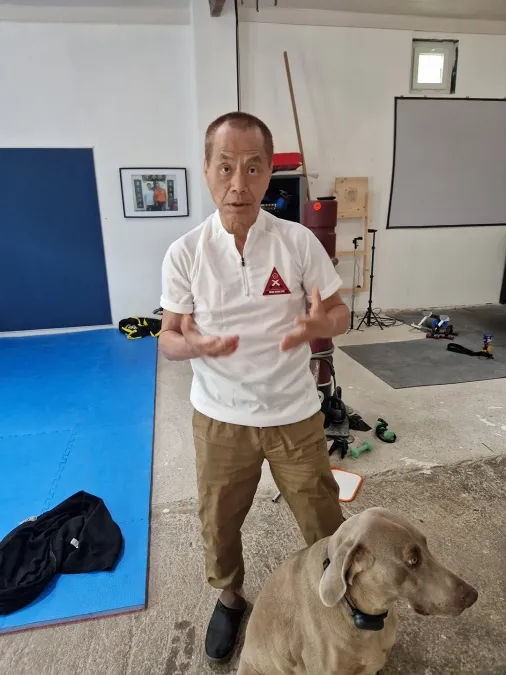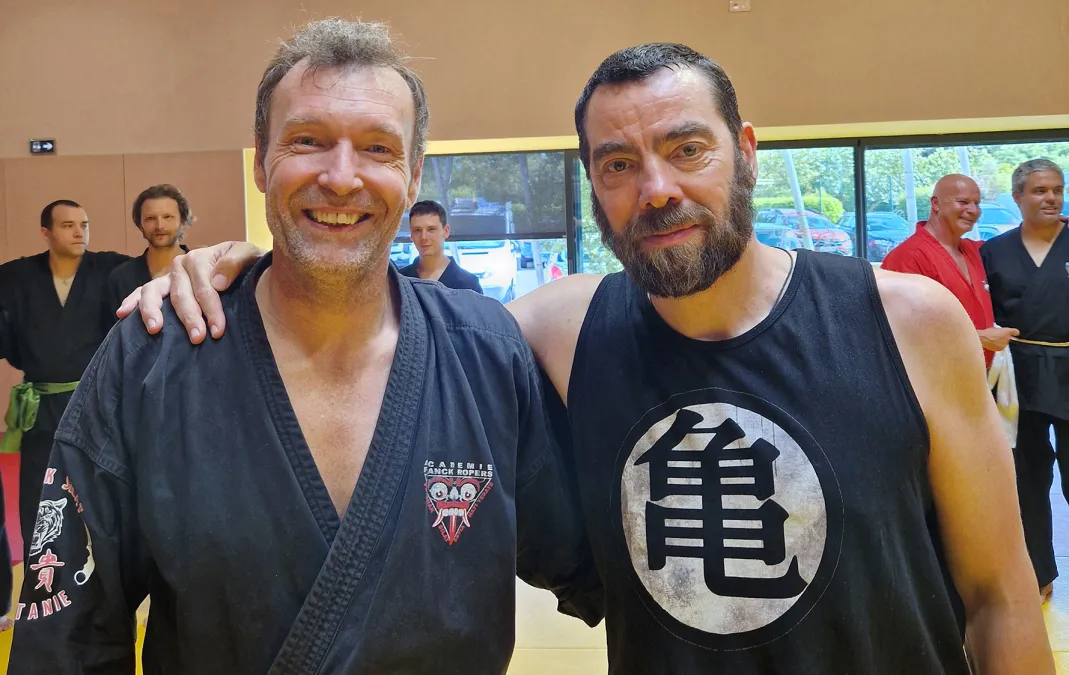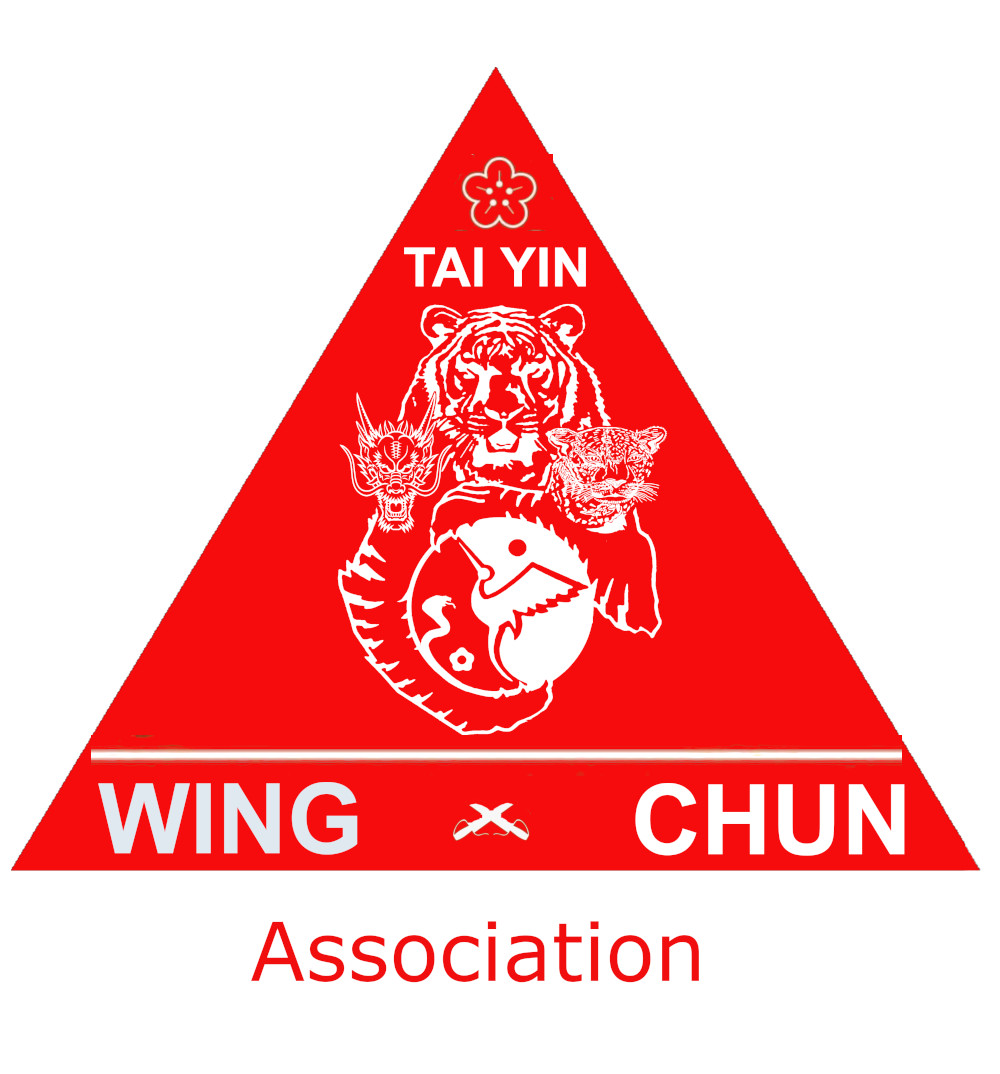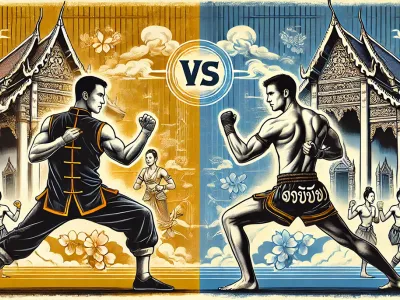
🌟 Wing Chun vs Muay Thai 🌟
⚡ When it comes to comparing martial arts, the duel between Wing Chun and Muay Thai sparks significant interest. These two disciplines, while very different, share an impressive reputation in the world of combat. But which one is truly the most effective? To answer this question, we need to dive into the history, techniques, and philosophies of these two martial arts. Buckle up 🚀, we're about to explore the fascinating worlds of Wing Chun and Muay Thai!
⛰ Origins and History
🤾♀️ Wing Chun: A Martial Art from Civil War
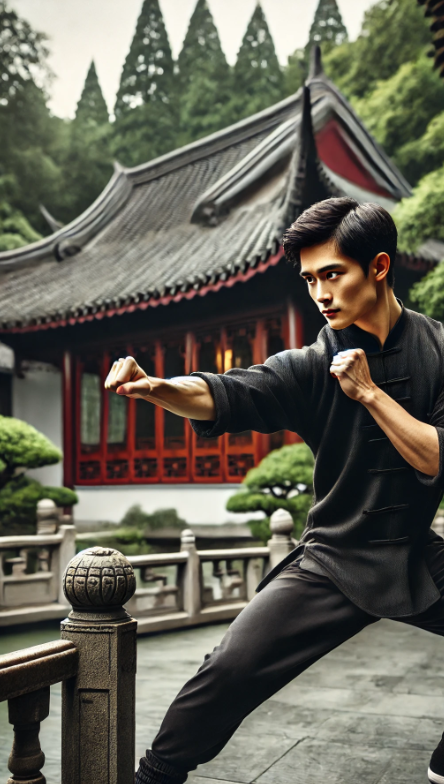 Wing Chun is a Chinese martial art rooted in the resistance against the Manchus. Created by a Buddhist nun named Ng Mui, this art was designed to be a quick and deadly combat method. Unlike other traditional Chinese martial arts, Wing Chun is not influenced by Taoist or Buddhist philosophy. It is a pragmatic martial art aimed at quickly neutralizing the opponent with surgical precision.
Wing Chun is a Chinese martial art rooted in the resistance against the Manchus. Created by a Buddhist nun named Ng Mui, this art was designed to be a quick and deadly combat method. Unlike other traditional Chinese martial arts, Wing Chun is not influenced by Taoist or Buddhist philosophy. It is a pragmatic martial art aimed at quickly neutralizing the opponent with surgical precision.
- 🕵️♂️ Secret Origins: Wing Chun was developed by an anti-Manchu secret triad.
- 🌎 Effectiveness: The goal is to end the fight in three strikes.
- 🛡️ Techniques: Utilizes force and precision with strikes at 45° angles.
🌟 Muay Thai: The Art of Eight Limbs
Muay Thai, also known as Thai boxing, is a traditional martial art from Thailand. This art is often called "the art of eight limbs" due to the use of fists, elbows, knees, and shins. Muay Thai finds its roots in the combat techniques used by Thai warriors and has evolved over the centuries to become a very popular combat sport.
- 🗡️ Warrior Origins: Used by Thai warriors on the battlefield.
- 🌍 National Sport: Evolved into a combat sport with specific rules.
- 🎓 Techniques: Uses the entire body to strike, clinch, and control the opponent.
⚔️ Techniques and Methods
🎖️ Wing Chun: Precision and Speed
Wing Chun is characterized by its direct and effective approach. Practitioners target specific areas on the opponent's body, using quick and powerful strikes to neutralize the threat as fast as possible. The concept of the centerline is fundamental, and practitioners aim to control and dominate this line to prevent the opponent from attacking.
- 🔟 Centerline: Control and dominance of the centerline.
- 💡 Precise Strikes: Targets are determined down to the centimeter.
- 🤼♂️ 45° Angles: Effective strikes that are difficult to defend against.
💪 Muay Thai: Strength and Resilience
In contrast, Muay Thai emphasizes brute strength and endurance. Practitioners use their fists, elbows, 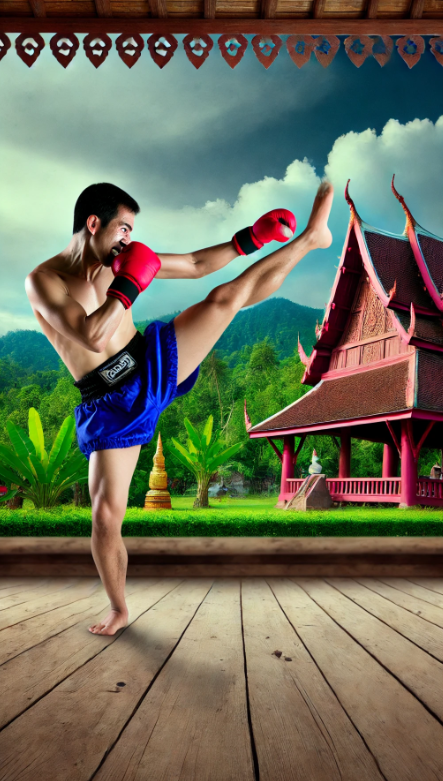 knees, and shins to inflict damage. Kicks are particularly formidable, capable of breaking bones. The clinch is also an essential part of Muay Thai, allowing practitioners to control the opponent while delivering knee strikes.
knees, and shins to inflict damage. Kicks are particularly formidable, capable of breaking bones. The clinch is also an essential part of Muay Thai, allowing practitioners to control the opponent while delivering knee strikes.
- 🥂 Clinch: Use of the clinch to control and attack.
- 🔪 Elbows and Knees: Powerful strikes to cause significant damage.
- 🌱 Endurance: Intense training to develop strength and resilience.
🕋 Philosophy and Mentality
🛡️ Wing Chun: Pragmatic and Deadly
The philosophy of Wing Chun is simple: neutralize the opponent in the fastest and most effective way possible. There is no room for superfluous movements or unnecessary displays of strength. Every movement is calculated to maximize efficiency.
- 🤔 No Philosophy: No Taoist or Buddhist influences.
Muay Thai: Tradition and Resilience
Muay Thai is steeped in tradition and respect. Practitioners often follow rituals before combat, such as the Wai Kru, a ritual dance to honor teachers and ancestors. The Muay Thai mentality is to persevere through pain and hardship, cultivating incredible resilience.
- Respect for Traditions: Importance of rituals and ceremonies.
- Resilience: Perseverance in the face of pain and challenges.
- Warrior Spirit: Heritage of ancient Thai warriors.
Wing Chun vs Muay Thai: Head-to-Head Comparison
Effectiveness in Combat
In terms of combat effectiveness, both Wing Chun and Muay Thai offer distinct advantages. Wing Chun excels in situations where speed and precision are crucial, allowing practitioners to neutralize an opponent in just a few well-placed moves. On the other hand, Muay Thai is formidable for its power and ability to inflict damage all over the opponent's body. Muay Thai fights can be long and grueling, but the sheer power of the strikes can quickly take over.
- Wing Chun: Quick neutralization in three strikes.
- Muay Thai: Power and endurance with destructive strikes.
Adaptability and Flexibility
Wing Chun and Muay Thai have very different approaches to adaptability. Wing Chun focuses on the centerline and precision, making it difficult to learn other styles in parallel. Muay Thai, with its fluid movements and varied strikes, can be more adaptable to different combat styles.
- Wing Chun: Focuses on the centerline, difficult to combine with other styles.
- Muay Thai: More flexibility and movement, increased adaptability.
Training and Discipline
Wing Chun training emphasizes precision and repetition of movements to develop quick and precise reflexes. Muay Thai, on the other hand, is known for its rigorous and intense training, aimed at strengthening the body and mind to withstand pain and fatigue.
- Wing Chun: Precision and repetition of movements.
- Muay Thai: Intense training to develop strength and resilience.
Can You Combine Wing Chun and Muay Thai?
Biological Constraints
It is often suggested that combining Wing Chun and Muay Thai is difficult, if not impossible, due to the fundamentally different approaches of these two styles. Wing Chun focuses on maintaining the centerline, while Muay Thai relies on rotations and circular movements. The human brain, limited in its capacity to assimilate such different methods, might struggle to effectively combine these two styles.
Complementary Approaches?
However, some practitioners seek to combine the techniques of both martial arts to create a hybrid style. This requires a deep understanding of the principles of each discipline and the ability to adapt the techniques based on the situation.
- Difficulty: Combination is complicated due to different approaches.
- The idea of combining Wing Chun and Muay Thai may seem appealing to some, but in reality, it is practically impossible. Why? Here are a few reasons:
- Fundamental Differences in Techniques: Wing Chun requires constant maintenance of the centerline, while Muay Thai relies on rotations and fluid movements. The human brain cannot assimilate two opposing movement methods simultaneously.
- Different Objectives: Wing Chun aims to finish the fight in a few strikes, whereas Muay Thai is prepared for prolonged fights.
- Training and Conditioning: The training and conditioning methods are radically different, making the combination ineffective and confusing.
FAQs

1. Is Wing Chun more effective than Muay Thai?
It depends on the situation. Wing Chun is extremely effective for close and rapid combat, while Muay Thai excels in prolonged and varied fights.
2. Can you learn both martial arts simultaneously?
It is not recommended to learn Wing Chun and Muay Thai simultaneously due to the fundamental differences in their techniques and philosophies.
3. Which martial art is better for self-defense?
Both martial arts are effective for self-defense, but Wing Chun might have a slight advantage due to its focus on quick and decisive attacks.
4. Does Wing Chun have a spiritual component?
No, Wing Chun was developed as a purely practical martial art with no spiritual or philosophical component.
Why must Wing Chun end a fight in three strikes?
Wing Chun was designed to quickly neutralize the opponent, using precise and powerful strikes to avoid a prolonged fight.
Conclusion
Wing Chun and Muay Thai are both incredibly effective martial arts, each with its own strengths and weaknesses. The choice between the two depends on your personal goals in combat. If you're looking for a quick and precise method to neutralize an opponent, Wing Chun might be the best choice. If you prefer a powerful and resilient combat style, Muay Thai is for you. Whatever your decision, the important thing is to train with dedication and discipline to master the chosen art. Good luck on your martial journey!
In the end, whether you choose Wing Chun or Muay Thai, remember that each martial art has something unique to offer. Explore, learn, and develop your skills to become an accomplished and confident practitioner.
#Wing Chun vs Muay Thai

